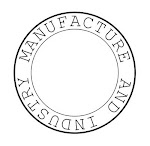 "Our world is increasingly one devoid of reality and humanity. As our lives are played out over the ether - by electronic mail and instant message, in online shops - we are becoming detached from what is real and substantial and true," writes Patrick Grant in the foreword to this stunning book of photographs by Lara Platman.
"Our world is increasingly one devoid of reality and humanity. As our lives are played out over the ether - by electronic mail and instant message, in online shops - we are becoming detached from what is real and substantial and true," writes Patrick Grant in the foreword to this stunning book of photographs by Lara Platman.The book was published to coincide with the 100th anniversary of Harris Tweed's trademark Orb stamp and is a fitting tribute to the only fabric that has its own legislation. 'Harris Tweed means a tweed that has been hand-woven by the islanders at their homes in the Outer Hebrides, finished in the Outer Hebrides, and made from pure virgin wool dyed and spun in the Outer Hebrides' goes the definition which became statutory when it was passed in 1993.
Having endured a fall in demand during the 90s and early part of this century, the Harris Tweed industry has steadied, meaning there is demand for weavers once again.
Covering the entire process - from wool to mill to weaver and on to finished article, Platman introduces the reader to some of the people who have benefitted from the resurgence of this beautiful material. Alongside some good portrait photos of the weavers, mill workers and farmers, are short descriptions of their daily lives and working ways.
The book provides a suitable entry level of detail. Details on the different sheep breeds tell the reader about Blackface sheep - dating from the 12th century and the original wool source for Harris Tweed. Nowadays Scottish cross breeds and Cheviot sheep from the Borders are used. These allow for softer tweeds to be produced, meeting modern demand for such fabrics.
"I hope... that my depiction of those who work with Harris Tweed will be a reminder of some of the skills that are alive in Britain today," writes Platman in her introduction. Harris Tweed: From Land to Street is more than a reminder. It is a celebration of the production of one of Britain's finest items. And it certainly has the substance and truth that Patrick Grant mentions in his foreword.
-
With thanks to Emma at Frances Lincoln




